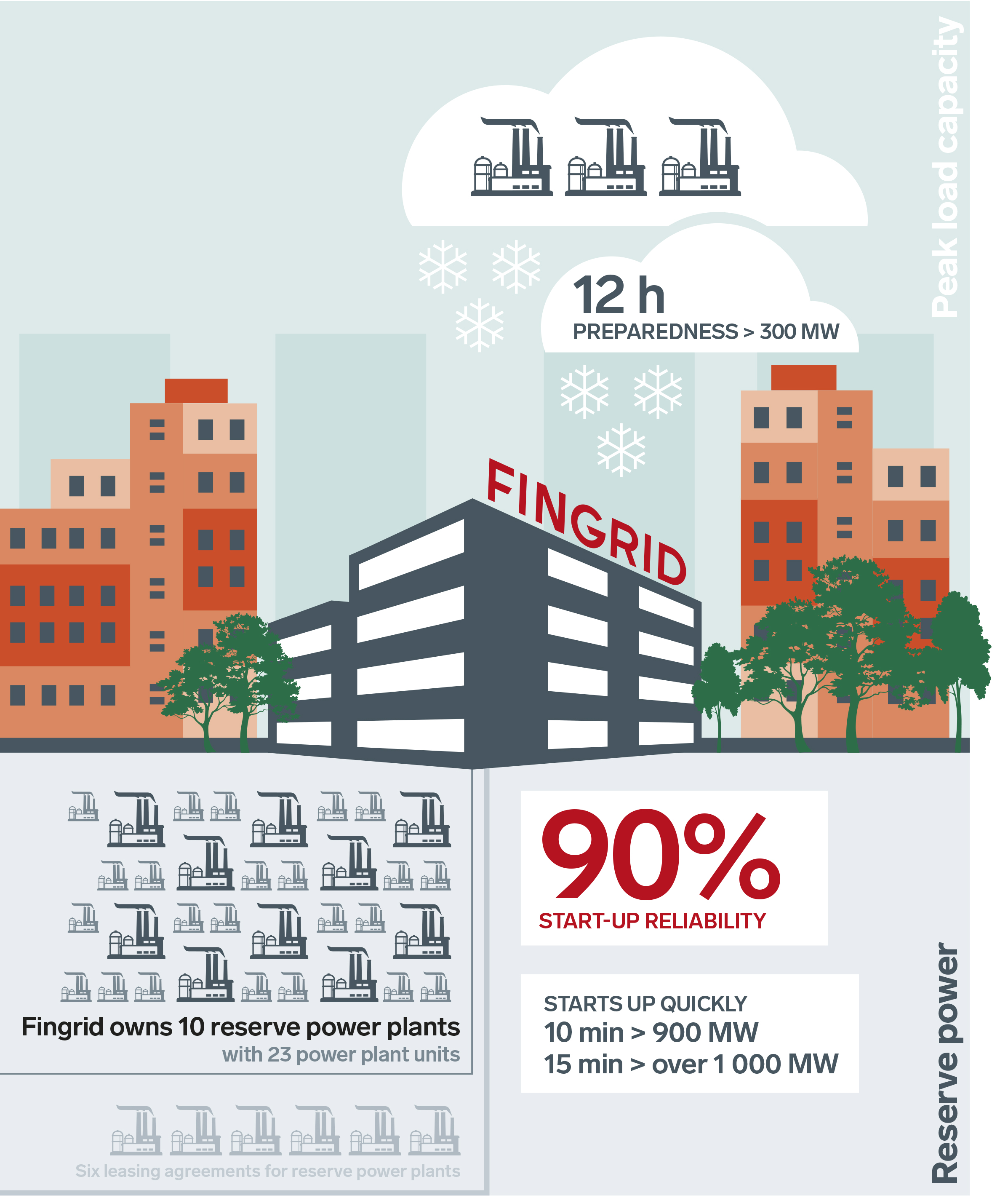
These questions were answered by Fingrid’s Reima Päivinen, Senior Vice President, Power System Operation and Sampsa Holmberg, Manager of the Reserve Power Plants unit.
Reserve power
Fingrid is responsible for maintaining the power balance between electricity production and consumption in Finland at all times, which means handling imbalance and disturbance situations quickly. For disturbance situations, Fingrid has access to a so-called fast disturbance reserve that consists of Fingrid power plants, leased power plants and purchased reserve. In combination with the capacity on the balancing power market, this provides enough capacity to handle various fault situations. All in all, the fast disturbance reserve is more than 1,000 megawatts.
Fingrid owns 10 reserve power plants containing a total of 23 power plant units. The company also has six leasing agreements for reserve power plants.
Reserve power has been needed about once a month during 2016. The need for reserve power varies a lot from year to year.
Reserve power starts up quickly. Approximately 900 MW of power is available in 10 minutes and after 15 minutes, the entire capacity of more than 1,000 MW is fully utilised. The full amount of power has been needed a few times in recent years.
Disturbance situations often require one or more reserve power units that operate for a few hours at a time. Use of the units is determined on the basis of what is most economical for the customer.
Faults in cross-border connections and disconnection of large power plants from the grid cause the majority of disturbance situations in the electricity grid. The fast disturbance reserve has been dimensioned so that it can compensate for a power deficit caused by a possible fault in the power system’s largest power plant unit or transmission connection.
Reserve power plants must have a start-up reliability of 90%. Each unit is subject to testing and trial use every six weeks.
Peak load capacity
Peak load capacity ensures security of supply in peak consumption situations during the winter if the amount of market-based electricity available is not sufficient. Since it was established in 2007, the peak load capacity system has been used a few times. Peak load capacity is based on the law: the Energy Authority defines the amount needed and decides which power plants and consumption locations belong to the system. Fingrid is responsible for operating the system.
Power plants belonging to the Finnish peak load capacity produce energy when necessary between 1 December and 28 February. The Naistenlahti and Haapavesi power plants have a contractual agreement with Fingrid concerning peak load capacity. On the consumption side, the Suomenoja heat pump is also part of peak load capacity.
The power plants are available at 12-hour notice during the winter months and 30-day notice at other times of the year. They can produce a combined total of 300 MW of power. The Energy Authority has decided that the amount of peak load capacity will be around 600 MW in the next three-year period. The period will begin next summer.
Power balance forecast
In the autumn, Fingrid compiles a forecast of electricity adequacy for the next winter. This assesses the production capacity available to Finland and the increase in consumption caused by sub-zero winter weather. The forecast is intended for customer and media use.
The momentary consumption forecast has been 15,000 MW for several years in a row; this figure is based on monitoring data. This figure was exceeded in January 2016 when a record consumption peak was reached. This situation was handled well. The electricity peak in our country is most affected when temperatures drop below –20 degrees for a longer period in southern Finland, which has a large number of large consumers and households using electric heating.
“The report sends a message that Finland has enough electricity. However, our high dependence on imports means that there is always a risk of limits on the supply of electricity. The forecast also stimulates energy policy discussion about the amount of domestic production and the functionality and development of the electricity market,” says Reima Päivinen.
Fingrid’s figures are used as part of the common forecast made with other Nordic transmission system operators. European TSOs (Entso-E) also prepare a corresponding balance power forecast, which includes the information from Finland.






